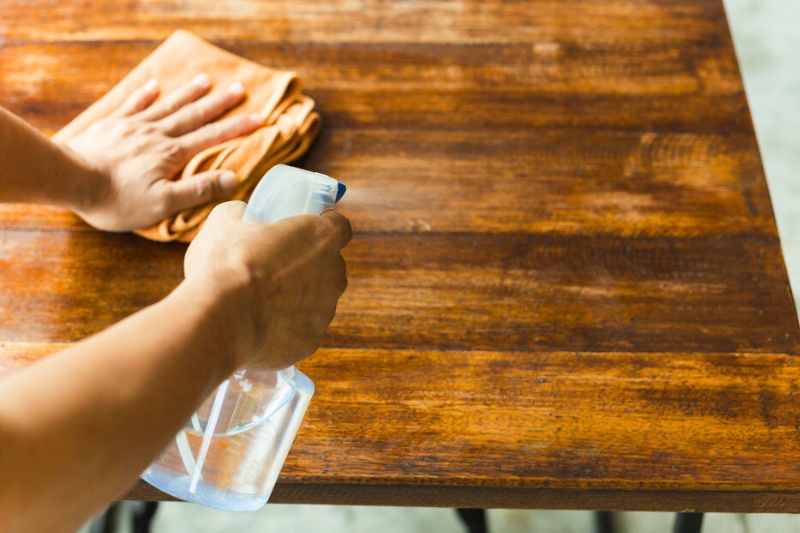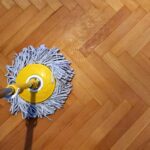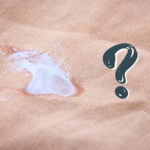If your wooden table feels tacky and unloved, it’s high time you grabbed your cleaning gear and showed it some TLC!
The best part is you don’t even have to invest in fancy, expensive cleaners to revitalise your wooden table. You can use tools and goodies at home to remove the icky mess from the surface!
So, let’s clean the sticky grime off your wooden table.
What Makes Wood Tables Sticky?
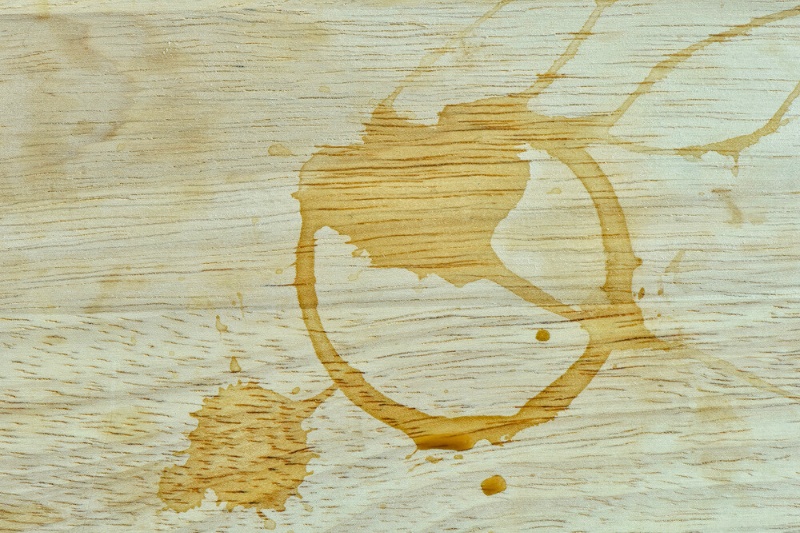
If your wooden table feels sticky, this is a sign that it’s is covered in an accumulation of:
- Dirt
- Grease
- Food and drink spillages
- Oils
- An excess of varnish/polish/wax
- Adhesives
- Cleaners (containing silicone)
And while this may sound like a smallish nightmare to handle it is, in fact, relatively easy to clean the stickiness off the table! Follow the guide below.
A Step-By-Step Guide to Cleaning a Sticky Wooden Table
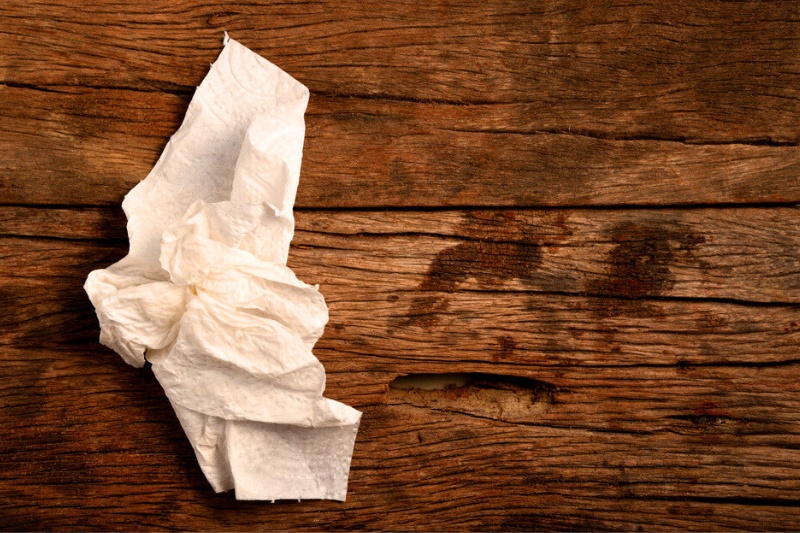
Tips to keep in mind
- Don’t rub the table too hard. If you scrub the wooden surface, you risk scratching it.
- Don’t use abrasive cleaners/tools because they will damage the wooden table.
- Don’t oversaturate the wooden table in liquid(s). Stick to using damp cloths and small amounts of cleaning solution.
- Keep windows and doors open to ensure sufficient airflow.
- Mop up any spillages with a clean cloth as you go.
- Rub the wood table in the direction of the grain.
- Always do a patch test first. A quick test will tell you if the cleaner will react with the table and if the wood will likely discolour. If there is an adverse reaction, you can stop using the solution and find a different one.
- Maintain your table so you don’t get horrible sticky build-ups.
- Remember to dilute your cleaner before you use it. For example, vinegar must be diluted in fresh water before it’s used. If used alone, the acidic nature of the vinegar could damage the wooden table.
- Try to buy bleach-free cleaners to maintain wooden tables, especially if you’ve got dark wooden ones. Bleach can discolour and weaken wooden surfaces. If you must use bleach, dilute it in plenty of water. But as mentioned, try to avoid using it.
- Once you’ve cleaned your wooden table, you’ll likely have to treat it with a protective coating. Sometimes, you’ll have to refinish your table. This, of course, depends on how damaged the piece is or if you really can’t remove the stickiness from the surface (this entails stripping the old finish and adding a new one).
Method 1: Vinegar (light wood)
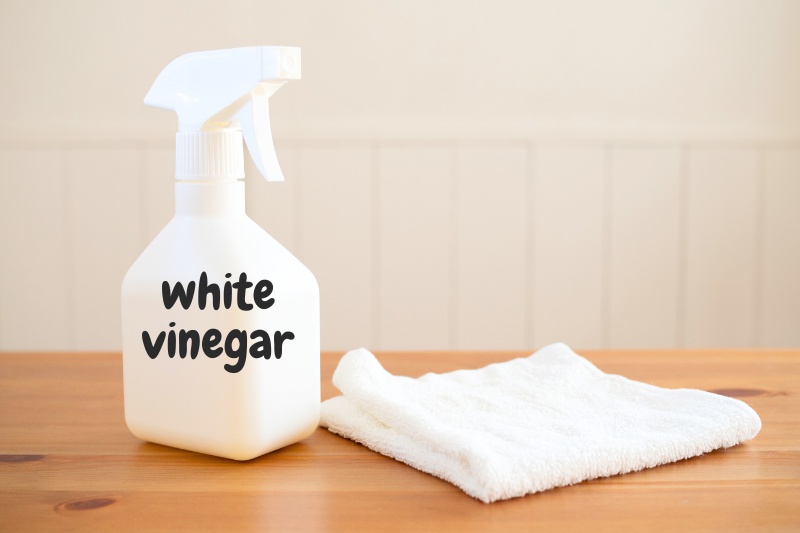
What you need:
- Microfibre cloths
- Bucket
- Warm water
- Washing-up liquid (optional)
- Spray bottle
- White vinegar
- Cotton buds (optional)
- Polish (optional)
Steps to follow:
- Clear your table – remove the placemats, centrepiece, and general clutter.
- Grab a clean microfibre cloth and wipe the whole table down to remove dust and crumbs from the surface.
- Fill a bucket with warm water (Optional: add a few drops of washing-up liquid if you like).
- Soak the microfibre cloth in the water.
- Wring the cloth out and wipe the whole table down (Optional: if you used washing up liquid, remove the suds from the surface).
- Fill a clean spray bottle with equal parts of white vinegar and warm water – the acidity helps to break down grease and grime.
- Spray a little solution onto a discreet patch of the wooden table to do a patch test – continue with this method if all is well.
- Spray the solution over the sticky areas on your table.
- Wait a few minutes.
- Grab a clean microfibre cloth and wipe the areas down – pay close attention to extra sticky zones.
- Coat extra sticky areas in a little more solution and rub the surface gently.
- To clean the stickiness out of tricky areas, use cotton buds.
- Use a fresh cloth that’s been soaked in plain water to remove any residue from the surface.
- Allow the surface to dry naturally.
- Repeat the steps above if need be.
- Optional: Polish and buff the wooden surface – use a suitable polisher.
Tip: For extra sticky spots, apply a little mineral spirit to the area and wipe the surface down – you must do a patch test first!
Method 2: Tea bags (dark wood)

What you need:
- Bowl
- Boiling water
- Tea bags
- Microfibre cloths
- Polish (optional)
Steps to follow:
- Fill a bowl with boiling water.
- Add three tea bags to the water.
- Allow the tea bags to steep for 10 minutes.
- Clear general clutter off the wooden table.
- Grab a clean microfibre cloth and wipe the whole table down to remove dust and crumbs from the surface.
- Dip a clean microfibre cloth into the tea (in the bowl).
- Wring the cloth out.
- Gently wipe the sticky surface.
- Repeat Steps 6, 7, and 8 until you’ve cleaned the whole table.
- Grab a second microfibre cloth.
- Soak it in some plain, warm water.
- Wring the cloth out.
- Wipe the surface with the damp cloth.
- Remove excess liquid from the table by wiping it away with a dry cloth.
- Allow the table to dry.
- Optional: Polish the table with a suitable product.
Method 3: Specialised product
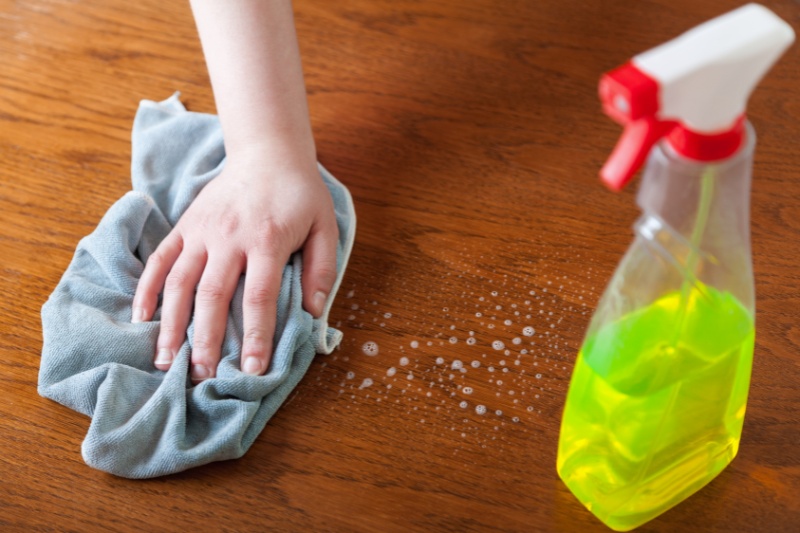
Not keen on making up your own cleaner? Don’t worry. You can buy specialised cleaning products to remove the stickiness from your wooden table.
Tip: Do a patch test with your chosen cleaner. And adhere to the instructions on the packaging of your chosen wood cleaner.
- Tableau Wood Soap can remove grease, grime, and stains from a wealth of wooden surfaces, including furniture and skirting boards. It’s easy to use – you just dilute a 50ml dose of the product in 5l of warm water and use a cloth to apply it to a wooden surface. Its scent isn’t too overpowering either, which is a bonus.
- Murphy’s Oil Soap Liquid Cleaner is a concentrated cleaning formula made from biodegradable and naturally derived ingredients that has a citronella fragrance. It can be used on various wooden surfaces, including tables, bookcases, and wooden floors (pieces/surfaces must be sealed and finished).
Note: You must make sure that you choose a suitable wood cleaner. If you buy the wrong cleaner, the solution may damage your wooden surface. It’s also worth keeping in mind that specialised products get mixed results, so don’t be too disheartened if the product doesn’t work the first time/at all.
Method 4: Call a pro
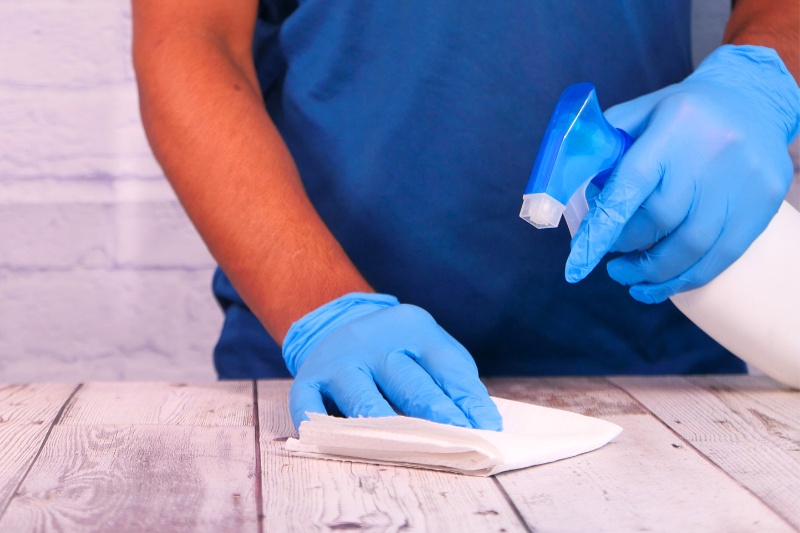
If you’ve tried the method(s) above a few times and your wooden table is still sticky, it’s time to ask an expert for advice!
A quick online search will bring up specialists near you. All you need to do is speak to someone with lots of glowing reviews who is reasonably priced and experienced in treating sticky tables.
Don’t forget to ask the professional plenty of questions so you know how to treat the sticky problem in the future or to find out how you can avoid the issue!
However, don’t be disheartened if the pro tells you to strip the old finish off your table and replace it with a new one!
Why Is My Table Sticky After Cleaning?
If you’ve tried the above and your table is still sticky, it may be time to strip and refinish it.
In this case, the stickiness may be too bad, and the best (and easiest) thing to do would be to strip the old finish off your wooden table and replace it with a new one.
If you’re not sure about where to start with this type of project, check out this video from the Little Reesor House for inspiration!
Why Are Restaurant Tables Sticky After Cleaning?
It’s a bit yucky, to say the least when you sit down at a tacky table in a restaurant and find that your paper napkin is stuck to the wooden surface!
All sorts of questions, like “Why am I here? This place doesn’t even clean its tables properly!” and escape plans start formulating in your head.
In reality, the sticky tables you get in restaurants aren’t much different from those at home. They’re essentially covered in everyday dirt, greases/oils, polish, too much cleaning product, and food/drink-related remains.
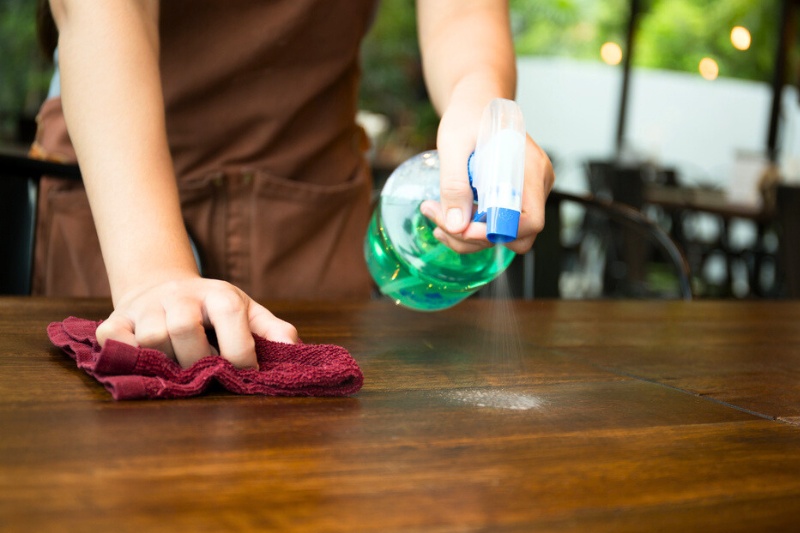
The significant difference is that these ‘sticky causes’ are amplified in a restaurant setting. The tables get used by more people, are cleaned more frequently, may not be cleaned with good quality cleaning products, and may not be wiped down effectively by a member of staff.
Like wooden tables found at home, you can remove the stickiness from restaurant tables using the steps above. But you may have to take care of them more often because they’re exposed to more wear and tear-related issues.

Bethan has a passion for exploring, reading, cooking and gardening! When she’s not creating culinary delights for her family, she’s concocting potions to keep her house clean!
